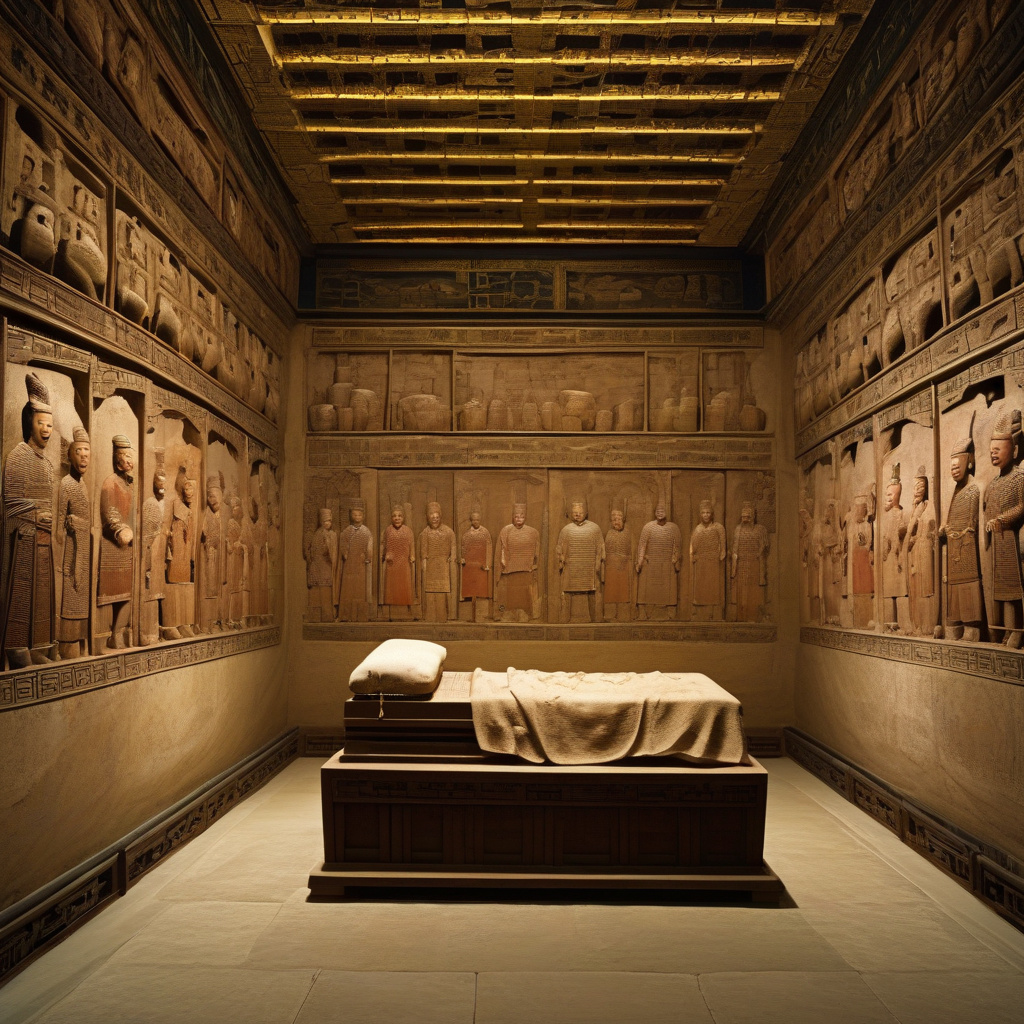China Uncovers World’s Oldest Steel Acupuncture Needles in 2,000-Year-Old Emperor’s Tomb
The world’s earliest known steel “acupuncture needles,” dating back roughly 2,000 years, have been unearthed in China. This remarkable discovery sheds light on the ancient practice of acupuncture and its significance in Chinese history.
The needles were found in the tomb of Liu Fei, an emperor from the Western Han Dynasty, located in Jiangsu province. Archaeologists discovered a set of nine steel needles measuring about 3.5 to 4.8 inches long. These needles are believed to have been used for acupuncture, a traditional Chinese medicine practice that involves inserting thin needles into specific points on the body to alleviate pain and promote healing.
The significance of this discovery cannot be overstated. Acupuncture is a fundamental component of traditional Chinese medicine, with a history that dates back thousands of years. The finding of these ancient steel needles provides tangible evidence of the early use of acupuncture in ancient China.
Moreover, the discovery challenges previous beliefs about the history of acupuncture. While the practice is traditionally thought to have originated during the Eastern Han Dynasty (25-220 AD), the presence of these steel needles in Liu Fei’s tomb suggests that acupuncture may have been used even earlier than previously thought.
The craftsmanship of these steel needles is also impressive. Despite their age, the needles are remarkably well-preserved, a testament to the advanced metallurgical skills of ancient Chinese artisans. The fact that these needles have withstood the test of time speaks to the high quality of steel production in ancient China.
This discovery not only highlights the historical importance of acupuncture but also underscores the enduring relevance of traditional Chinese medicine in the modern world. Acupuncture has gained popularity globally for its effectiveness in treating a variety of ailments, from chronic pain to stress and anxiety.
Furthermore, the unearthing of these ancient steel needles serves as a reminder of the rich cultural heritage of China. The country’s history is steeped in tradition and innovation, with practices like acupuncture continuing to captivate people around the world.
As archaeologists continue to excavate Liu Fei’s tomb and unravel its secrets, there is no telling what other treasures and insights into ancient Chinese civilization may be uncovered. The discovery of the world’s oldest steel acupuncture needles is a testament to the enduring legacy of acupuncture and its role in shaping China’s past and present.
In conclusion, the recent discovery of the world’s oldest steel acupuncture needles in the tomb of Emperor Liu Fei offers a fascinating glimpse into the early history of acupuncture and its cultural significance in China. This groundbreaking find not only challenges existing narratives about the origins of acupuncture but also highlights the enduring legacy of traditional Chinese medicine.
acupuncture, China, ancient history, traditional medicine, cultural heritage









